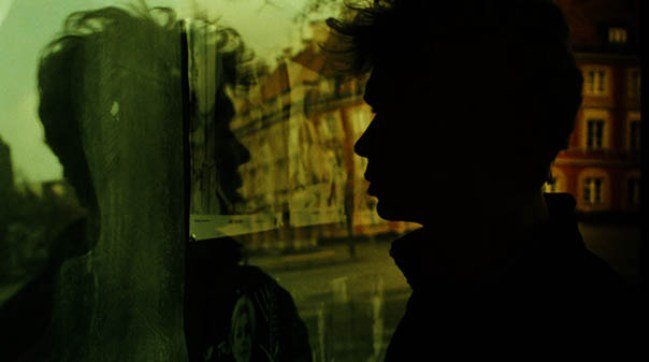
Under censorship’s nefarious grip, cinema becomes not just a driver of social justice but a sophisticated tool of oppression.
There is, however, a positive side effect of censorship: Sometimes it inspires filmmakers to be more experimental, innovative and free-thinking. Case in point: Poland after World War II.
Under the Communist regime, Polish authorities raged war on moviemakers who tried to reveal that the state’s ballyhoo about progress was nothing more than propaganda. Any critique of the Soviet Union or the Polish People’s Republic was silenced. For a new generation of filmmakers, young people disillusioned by the sacrifices made during the war, these laws became an invitation to rebel—a cinematic revolution handed to them on a silver plate.
Polish censors, under the primary censorship board at Główny Urząd Kontroli Prasy, Publikacji i Widowisk (i.e. the Main Office for Control of the Press, Publications and Public Performances), were highly literary, capable of deciphering even the most sophisticated “subversions” in books, newspapers and other written forms—but they were quite impotent when it came to evaluating images. So beginning in 1957 with Andrzej Wajda’s Kanal, Polish films started to develop and expand upon an intricate cinematic language of metaphors, allegories, symbols, poetic imagery and other means of non-verbal expression. In Kanal‘s devastating final act, the dying fighters of the Warsaw Uprising represent different parts of Polish society, past and present. For censors, this sequence may have seemed like a condemnation of the insurrection.
“Polish filmmakers were forced to learn how to say something without saying it directly, how to depict a reality that did not officially exist,” says Ryszard Lenczewski, the Oscar-nominated cinematographer of Paweł Pawlikowski’s Ida (shot together with Łukasz Żal). Lenczewski began his career in 1970s, when the battle for Polish cinema was raging on many fronts. “This was a responsibility we all felt: to create layered images, images with double meanings that dared viewers to interpret them differently.”

Andrzej Wajda’s 1958 film Ashes and Diamonds
Viewers were depended upon to be active participants, decoding hidden meanings. “It was all in the details—like using wider lenses to show things you would not be able to show any other way. Something may be occurring in the background, slightly blurred. Sometimes all the film needed was to not include something or someone in the frame. Or to show a person in an unbalanced manner, i.e. a drunken assistant to a town mayor in Ashes and Diamonds.”
That film, Wajda’s 1958 masterpiece shot by cinematographer Jerzy Wójcik, is filled with symbols and layered imagery portraying everything wrong with post-war Poland. It made the censors’ heads spin. They knew the material was dangerous—some of them tried to stop it from reaching a wider audience—but ultimately had to back off. Unsurprisingly, some messages were too cryptic for international audiences to decipher. Yet a universal cinematic language resonated for viewers in different parts of the globe. In the film’s most famous scene, the protagonist lights glasses of vodka as if they were candles, and the world understood the symbolism.
Censors, perturbed by the growing international acclaim, grew more paranoid. “After we finished The Wedding, the censors held the material for two or three weeks without uttering a word of explanation,” remembers Sławomir Idziak, camera operator under cinematographer Witold Sobociński on that Wajda film. The Oscar-nominated cinematographer (Black Hawk Down) started his career at the end of 1960s. “They supposedly watched the film shot by shot, comparing it to the novel by Stanisław Wyspiański on which it was based to see if something was added or missing in an attack of the Communist order.”
Idziak shot Krzysztof Kieślowski’s 1988 film A Short Film About Killing. “I shot the film in this hideous yellow-greenish color to subtly hint at the director’s idea that the country could be a killer, just like the main character. I remember one reviewer in Cannes writing that because the screen assumes the color of urine, it encapsulates the reality of Communist Poland. That was beautiful.”

Krzysztof Kieślowski’s A Short Film About Killing, shot by Sławomir Idziak
The paradox was that state funding of these films and the censors’ decisions on how they should be seen were intrinsically linked. The government valued art, and wanted to produce films, yet wanted art to be propagandistic—so instead of denying moviemakers the ability to create movies, officials chose to marginalize those that they didn’t agree with, or those who they suspected of being subversive. Polish films were huge outside of Poland—American auteurs like Martin Scorsese and Francis Ford Coppola saw them as masterpieces—but their directors sometimes had to be content for the titles to, domestically, only reach “a handful of city intellectuals who were opposing the regime anyway,” as Idziak puts it. “The truth is, many of these internationally applauded films, now classics, were commercial failures in Poland.”
2017 marks the 28th anniversary of the fall of Communism in Poland, and the beginnings of a different—perhaps harsher and less forgiving—type of censorship: the dictates of the commercial market. Yet Idziak and Lenczewski, both distinguished film educators, consider this a good test for their countrymen.
“We had to work with many limitations and yet we managed to speak our own voices,” says Idziak. “Now, the limitation is only within yourself.” MM
Darek Kuźma is a cinephile, film journalist, translator, freelancer, husband, father and Camerimage Film Festival programmer, not necessarily in that order.
Share:

